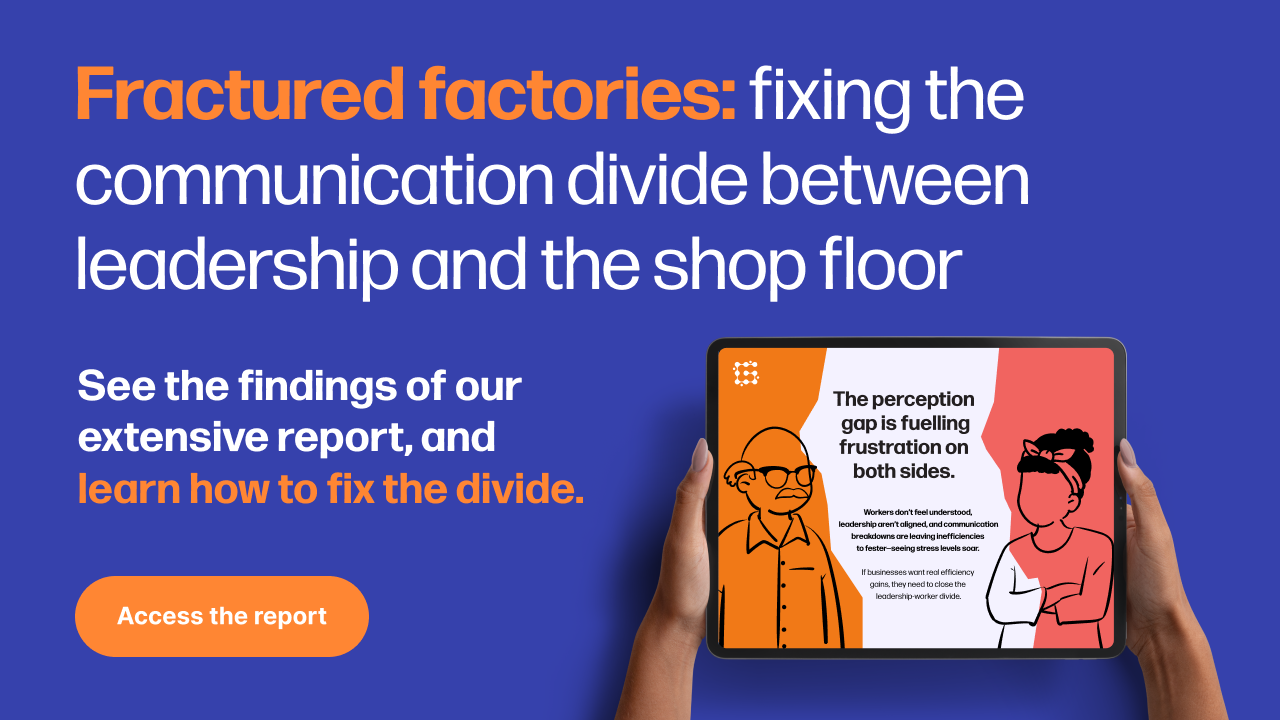
We had a busy couple of days gathering Smart Factory 2025 manufacturing insights from across the event. Among all the innovation on show, the conversations we had focused on something more fundamental: manufacturers still facing practical challenges that continue to get in the way.
Missing data. Energy waste. Disconnected systems. For many teams, these issues are still very real. And something that came up more than once was surprising. Not just at what our software can do, but that we also offer on-site support, lean services, and a tailored approach that goes beyond simply installing a system and walking away.
Paper is still the norm

One of the most common things we heard at the show was that teams are still relying on paper and spreadsheets to capture production data on the shop floor. Downtime, output, quality checks – all being logged by hand, often with no structure in place. Forms go missing, handwriting gets misread, and there’s no simple way to track what’s actually happening day to day.
At the same time, compliance processes are often just as reliant on paper. We spoke to teams trying to manage audits, inspections and internal checks using printed forms, disconnected spreadsheets or documents saved on local drives. For businesses working across multiple sites or under strict standards, this makes things harder to manage and increases the risk of something being missed.
What surprised a lot of people was how adaptable Gemba Compliance really is. It’s not just a digital version of a form. It’s context-aware, flexible, and built to guide teams through checks based on equipment, parts or process steps. People could see how easy it was to use. Creating and adjusting questions on the spot helped show that the setup is quick and doesn’t need coding or technical input. The idea that a working demo could be ready within a day really caught attention.
Production and compliance may seem like separate issues, but they share a common problem: critical information trapped on paper. Gemba Lean, Gemba Connect and Gemba Compliance all help replace that with reliable, structured data. Whether it’s manual entry, automatic capture or guided checks, the goal is the same – better visibility, greater consistency, and one system that works across the whole operation.
Energy needs attention, but most haven’t started

Energy consumption came up a lot, especially around rising costs and sustainability targets. But in most cases, teams aren’t monitoring it yet. It’s on the radar, but not something that’s been put into action.
We spoke about why it’s worth looking at energy as part of a wider picture. It’s not just about measuring usage. The bigger opportunity is to reduce unnecessary consumption by improving the way processes run overall. Once you start capturing the right data in context, it becomes much easier to see where change is possible.
Growth is a priority, but complexity is in the way

Many manufacturers are aiming to grow. Some are already scaling, others are preparing to. But across the board, people talked about the same barriers: slow processes, poor visibility, and systems that don’t talk to each other.
Growth needs a solid foundation. That doesn’t always start with software. In some cases, it means hands-on support to improve how things are currently running. That’s why we offer more than just digital tools. We also work directly with teams to help remove the friction that gets in the way.
The takeaway from Smart Factory 2025 manufacturing insights
What we heard most at Smart Factory 2025 wasn’t about chasing trends. It was about removing the blockers that still make daily operations harder than they need to be.
Whether it’s replacing paper, making better use of data, exploring energy improvements, or preparing for growth with the right support, these are the things that matter. And they’re the things we’re here to help with.





